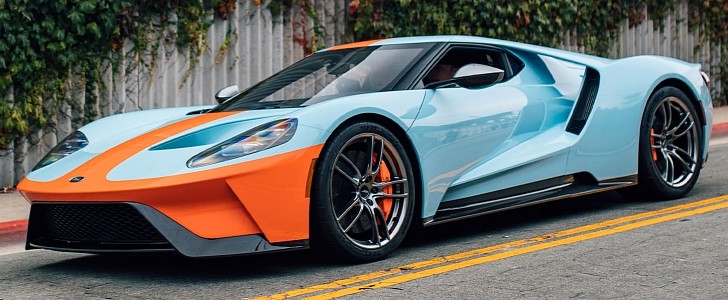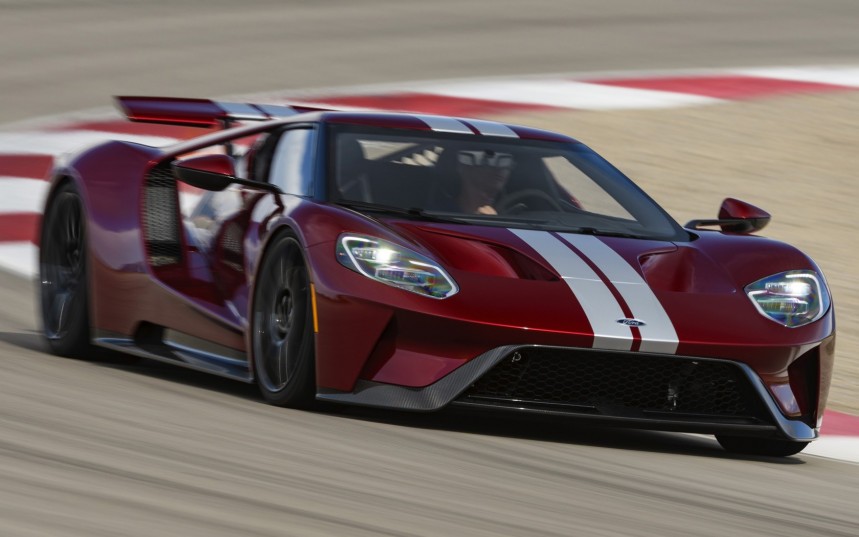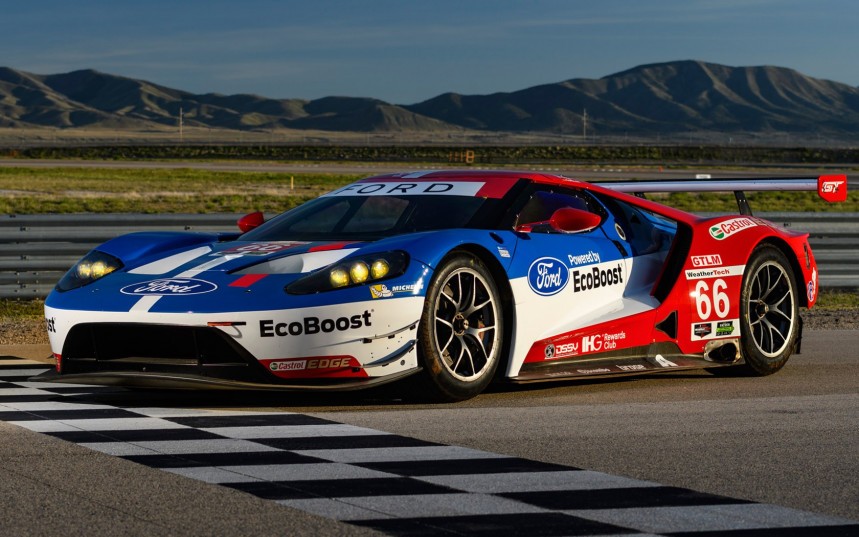Like its legendary Le Mans-winning ancestor, the second-generation Ford GT was built with racing in mind. Its extremely aerodynamically efficient body hides many cutting-edge technological innovations like the capable EcoBoost V6 or the race-inspired suspension system.
During its development stage, the GT was one of the best-kept secrets in the automotive industry. No more than a dozen key people knew about the existence of the project, and everything was kept airtight until its official unveiling.
After almost a decade since the last unit of its direct predecessor rolled off the assembly line, the new Ford GT was introduced to the world in 2015, at the North American International Auto Show held in Ford’s home city of Detroit, Michigan.
Fans and critics alike were in awe of what they saw. The new GT was arguably the most beautiful supercar ever created by the American manufacturer, blending cutting-edge aerodynamics with proven racecar technology.
Although a V8 and even a naturally aspirated V12 were considered for the powerplant, engineers eventually decided to use the compact 647 hp (482 kW; 656 PS) 3.5-liter EcoBoost V6 as it gave designers more room to experiment with the car’s innovative aerodynamics.
Yet one of the most interesting technical features of the new GT is the completely new suspension. The engineers dove deeper into the world of motorsport, designing a hi-tech pushrod suspension system traditionally used by open-wheelers such as Indy and Formula One racecars.
Like the first-generation GT, the system uses an independent, double-wishbone configuration, but that’s where the similarities end.
To optimize handling in various conditions, the car uses a set of revolutionary, electronically controlled Multimatic eDSSV dampers that can drop the ride height from 4.7 inches (120 mm) in Comfort mode to 2.8 inches (70 mm) in Track or Vmax modes.
Instead of traditional coil springs, pushrod-actuated torsion bars are used to actuate both the dampers and the two compact springs fitted to each wheel.
This configuration moves the bulk of its components inboard and greatly reducing unsprung weight. This allowed designers to go all out with the flow-through aerodynamic elements, which are key for the car’s performance.
The pushrod connects the lower and upper control arms through a rocker that interacts directly with the damper and compresses the compact coil springs using a rotating torsion bar.
This innovative system provides two unique spring rates for each ride height. In Comfort mode, when the GT is at its highest ride height, the torsion bars and coils act in series.
On the other hand, when the sporty Track or Vmax modes are engaged, a hydraulic actuator fitted at the base of each spring locks it, leaving the torsion bar to act as a spring, increasing the suspension's rigidity.
Using this configuration, the second-generation Ford GT’s drivers don’t have to worry about bottoming out even though it generates a tremendous amount of downforce.
This system makes the car handle a lot better than its predecessors and helped it win the LM GTE-Pro class at the 2016 edition of the famed 24 Hours of Le Mans, honoring the iconic GT40 which won the race exactly fifty years earlier.
After almost a decade since the last unit of its direct predecessor rolled off the assembly line, the new Ford GT was introduced to the world in 2015, at the North American International Auto Show held in Ford’s home city of Detroit, Michigan.
Fans and critics alike were in awe of what they saw. The new GT was arguably the most beautiful supercar ever created by the American manufacturer, blending cutting-edge aerodynamics with proven racecar technology.
Yet one of the most interesting technical features of the new GT is the completely new suspension. The engineers dove deeper into the world of motorsport, designing a hi-tech pushrod suspension system traditionally used by open-wheelers such as Indy and Formula One racecars.
Like the first-generation GT, the system uses an independent, double-wishbone configuration, but that’s where the similarities end.
To optimize handling in various conditions, the car uses a set of revolutionary, electronically controlled Multimatic eDSSV dampers that can drop the ride height from 4.7 inches (120 mm) in Comfort mode to 2.8 inches (70 mm) in Track or Vmax modes.
This configuration moves the bulk of its components inboard and greatly reducing unsprung weight. This allowed designers to go all out with the flow-through aerodynamic elements, which are key for the car’s performance.
The pushrod connects the lower and upper control arms through a rocker that interacts directly with the damper and compresses the compact coil springs using a rotating torsion bar.
This innovative system provides two unique spring rates for each ride height. In Comfort mode, when the GT is at its highest ride height, the torsion bars and coils act in series.
Using this configuration, the second-generation Ford GT’s drivers don’t have to worry about bottoming out even though it generates a tremendous amount of downforce.
This system makes the car handle a lot better than its predecessors and helped it win the LM GTE-Pro class at the 2016 edition of the famed 24 Hours of Le Mans, honoring the iconic GT40 which won the race exactly fifty years earlier.












